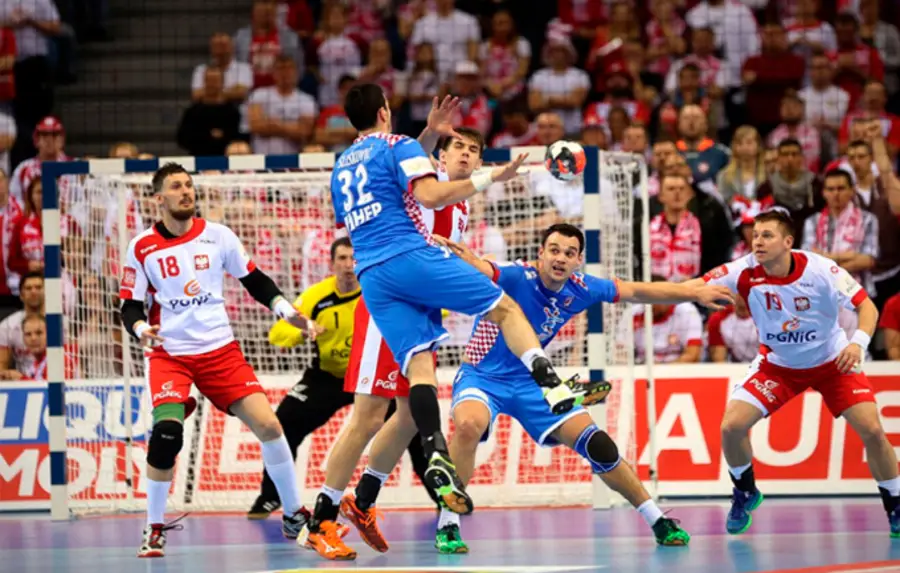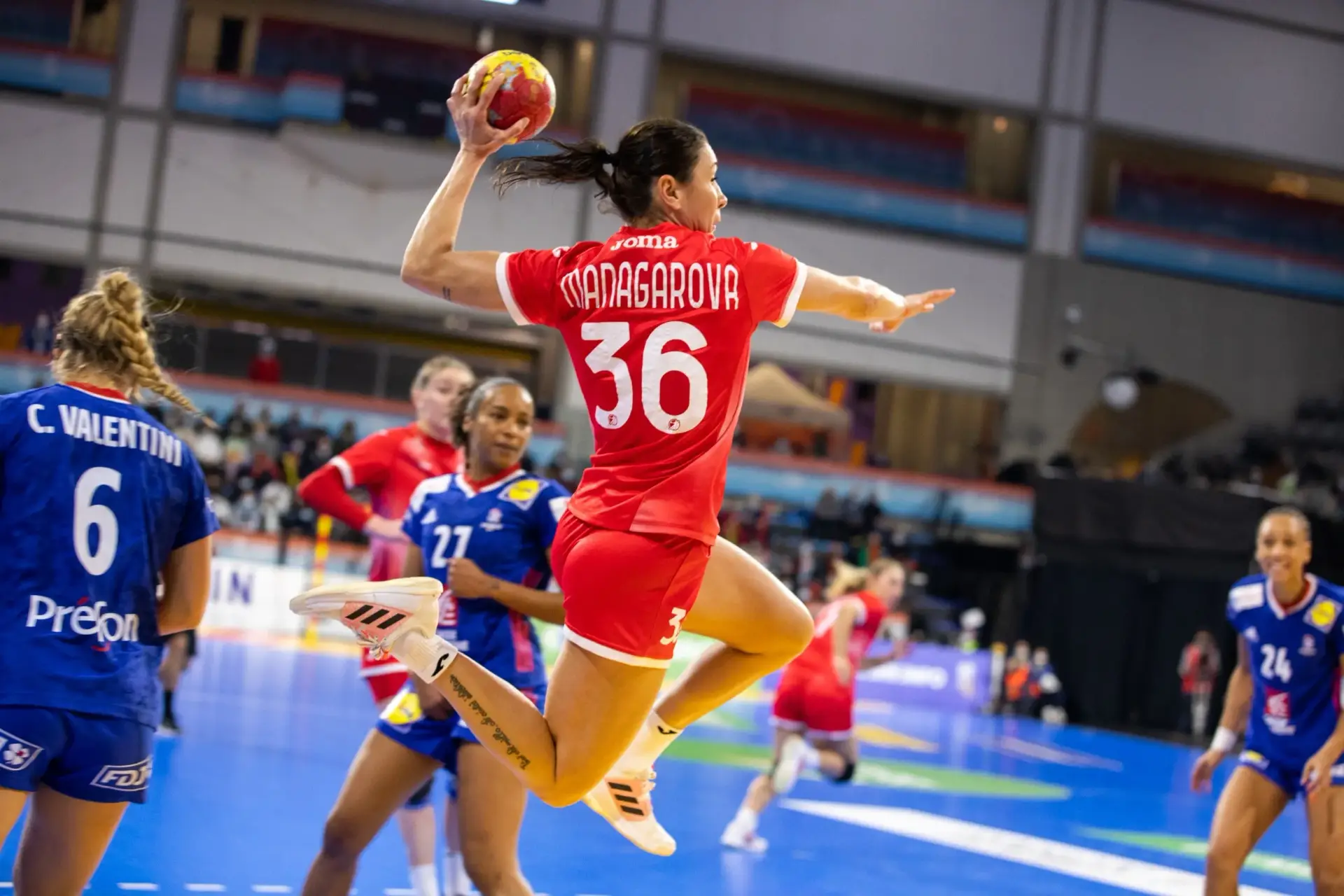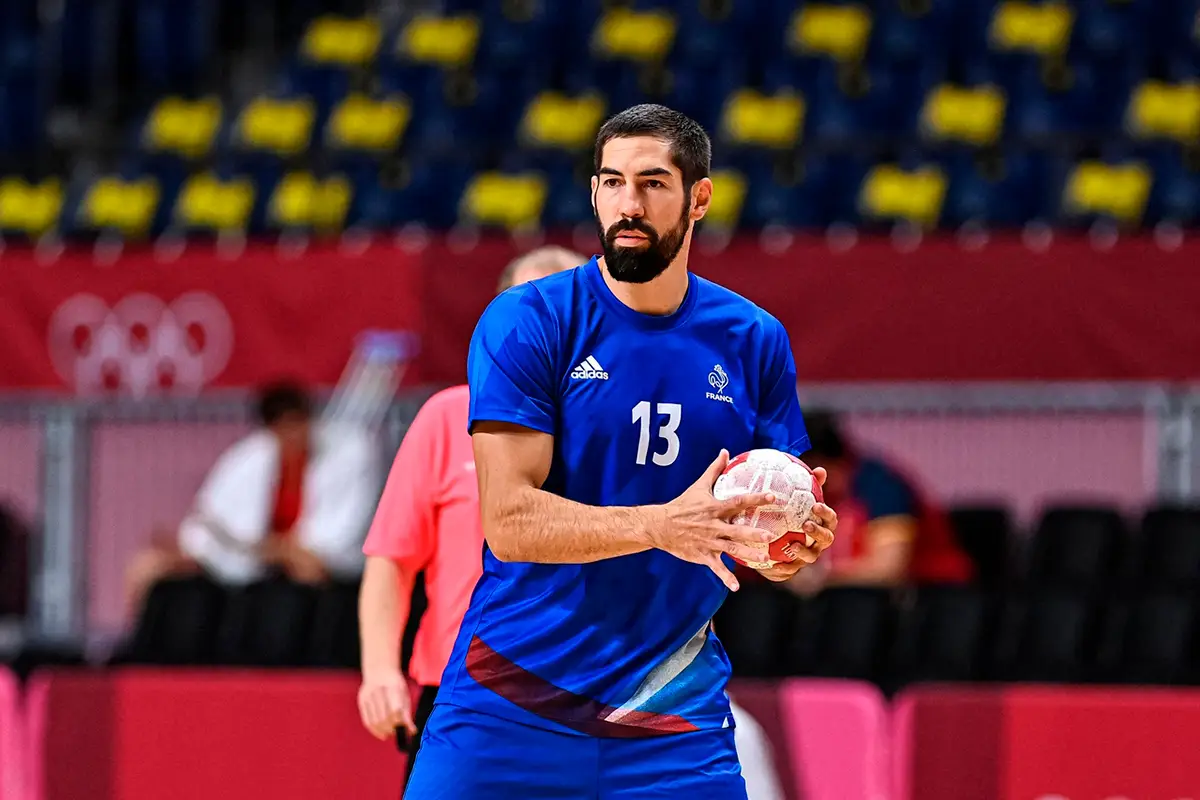Handball is a fast-paced team sport that combines the principles of tactical football, shooting mechanics from basketball, and close contact interaction similar to hockey. Every movement on the court has a purpose: to create a moment, break out of the zone, make a shot, or prevent a pass. Teamwork plays a decisive role, and individual skills are revealed through interaction. It is not only physical strength that wins here, but also thinking. The answer to the question of how to play handball requires an understanding of clear actions, technical precision, and the ability to make instant decisions.
Team composition and numerical balance: how to play handball
The number of players on a handball team is a key parameter. The main line-up includes seven active players: six field players and one goalkeeper. The bench allows for an unlimited number of substitutions, with changes taking place in the area near the centre line without a pause. The team requires a balanced configuration: one playmaker, two line players, two wing players and two defenders with the possibility of rotation in the attacking phase. Tactical rearrangements allow the seventh player to be brought on to replace the goalkeeper, increasing the pressure in the final seconds.
The court, goals and geometry of the game
 It is impossible to play handball without knowing the geometry of the court. The playing field measures 40 by 20 metres with mandatory markings: a 6-metre zone around the goal, a 7-metre penalty spot and a 9-metre arc for building an attack. The goal is 2 metres high and 3 metres wide, fixed to the base and secured with special supports. The goalkeeper’s main responsibility is to prevent shots from close range by blocking the angle and slowing down the pace.
It is impossible to play handball without knowing the geometry of the court. The playing field measures 40 by 20 metres with mandatory markings: a 6-metre zone around the goal, a 7-metre penalty spot and a 9-metre arc for building an attack. The goal is 2 metres high and 3 metres wide, fixed to the base and secured with special supports. The goalkeeper’s main responsibility is to prevent shots from close range by blocking the angle and slowing down the pace.
Time, structure, pace
A professional handball match consists of two 30-minute halves. There is a 10-minute break between them. Depending on the level of competition or age category, the structure is adjusted: junior tournaments are played in a 2 × 25 or 2 × 20 format, and in children’s leagues, a shortened format is allowed. The game starts with the starting whistle. The stopwatch is not stopped at every out, but only when necessary: injury, removal, controversial episode, 7-metre throw, discussion between referees. This maintains a high pace of play and requires maximum physical endurance from the athletes.
The coaching staff has three time-outs at their disposal: two in the first half and one in the second. Each lasts no more than 60 seconds. Teams use them to adjust their defence, regroup or catch their breath. The speed of transitions between attack and defence makes it impossible to stand still or pass the ball back. Every second affects the result, and positional errors cannot be corrected.
How to play handball: the ball and ball handling techniques
The ball used in handball is selected according to age, gender and tournament level. In the men’s professional category, the diameter reaches 58–60 cm, and the weight is about 450 grams. The women’s version is 2–3 cm shorter and 50 grams lighter. Children’s balls are the minimum size with a soft coating.
The player must hold the ball with one hand. Two-handed dribbling is prohibited. The ball may be tossed, bounced off the floor, and taken no more than three steps without dribbling. More than three steps is a violation. Repeated contact after dribbling without passing is a foul. The shooting technique is determined by the distance, pressure from defenders, and angle of attack. The most common technique is a three-step shot, where the final movement is either from a standing position or in a jump. The difficulty of the shot lies in coordination. The player must complete the manoeuvre a fraction of a second before touching the 6-metre zone.
A variety of techniques, from straight shots to spin shots, allow the player to outplay the wall, throw the ball over the goalkeeper or shoot into the near corner. The moment the ball leaves the fingers plays a key role: the faster it flies, the higher the accuracy.
Violations and responsibility: structure of fouls and disciplinary measures
Physical contact is permitted within strictly limited boundaries. The use of the body, tight defence and blocking the path are allowed. However, grabbing, hitting the arm, holding and falling with a pile-up are prohibited. Any attack on the head, neck or back is immediately recorded as a gross violation, even if accidental. The moment of jumping is judged particularly strictly — collisions in the air often result in a sending-off.
The pair of referees control the game from different angles. One tracks the ball, the other tracks the players’ positions. A foul is signalled with a hand gesture. Penalties are divided into three levels:
- The first warning is a yellow card, given for unsportsmanlike behaviour or excessive roughness.
- A violation that poses a threat to health, repeated — a 2-minute removal. The player leaves the field, and the team plays with fewer players.
- Three removals automatically turn into a red card — the player is suspended for the entire match, without replacement.
Incorrect substitutions, aggression towards referees or deliberate time-wasting also result in penalties.
The logic of substitutions and player roles: rotation, strategy, team flexibility
How many players are on a handball team at the same time — seven: six field players and one goalkeeper. Substitutions are unlimited, but only through a special zone at the centre line. Violation of this rule automatically leads to a 2-minute suspension. Substitutions do not require a pause. Players are substituted at the pace of the match. This dynamic rotation allows for varying tactics depending on the phase: defence, positional attack, fast break.
A tactical feature is the ability to replace the goalkeeper with a seventh field player. The team uses this decision when trailing in the score, at the end of the half, or when outnumbered. It is a risky but powerful strategy. One missed pass, and the ball flies into an empty net.
The roles in the team are strictly defined:
- The playmaker is the conductor of the attack, moving the ball forward and choosing the passing zone.
- The wingers manoeuvre along the flanks, creating width.
- The centre forward operates near the 6-metre line, distracting defenders and opening up for passes.
- Defenders — form screens, read attacks, cover areas.
- Goalkeeper — reacts to shots, comes out to intercept, and, if necessary, starts the attack.
Versatile players have an advantage. An athlete who is able to play in attack and instantly return to defence provides tactical depth.
Key principles of how to play handball:
- The ball may be held for no more than three seconds.
- The number of steps without dribbling is limited to three.
- Contact is only allowed in the torso area.
- Shots may only be taken outside the 6-metre zone.
- The goalkeeper may leave the goal area but loses special rights.
- A penalty shot is taken from 7 metres after a serious foul.
- Substitutions are made without stopping the clock.
- The team plays with a full line-up of 7 players, including the goalkeeper.
- An attack cannot continue for more than 30 seconds without a shot.
- Fouls are punished with 2-minute penalties, three with a red card.
How to play handball: the main points
 Understanding how to play handball reveals not just the rules, but a logical system with a high density of actions, minimal time for reflection, and complete involvement in every episode. The game combines physics, analytics, and tactical discipline. The court is dominated not only by speed but also by thinking, not only by strength but also by accuracy.
Understanding how to play handball reveals not just the rules, but a logical system with a high density of actions, minimal time for reflection, and complete involvement in every episode. The game combines physics, analytics, and tactical discipline. The court is dominated not only by speed but also by thinking, not only by strength but also by accuracy.
Handball builds confidence, strengthens coordination and improves reaction times. The density of game situations allows you to develop team synchronisation and the skill of interacting under time constraints. The high dynamics replace dozens of cardio workouts, and the load on the whole body makes the training functional and effective. Knowledge of the rules and structure reveals not just technique — it forms a style of thinking based on instant decision-making.
 en
en  ru
ru  de
de  ar
ar  es
es  nl
nl  hi
hi  fr
fr  it
it  pt
pt  el
el 










